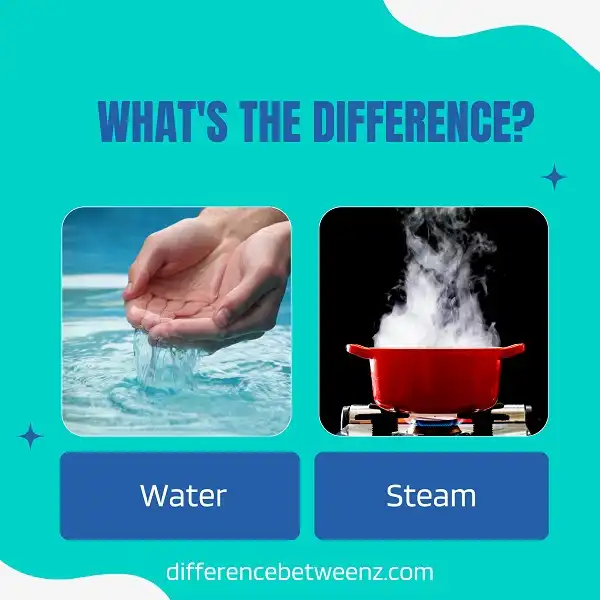Water and steam are two common substances found in the natural world. Though they are often confused, they are actually quite different. This blog post will explore the differences between water and steam, and explain why it is important to understand them. By understanding the differences between these two substances, we can better utilize their unique properties in order to achieve specific goals. Thanks for reading!
What is Water?
Water is a clear, colorless, odorless, and tasteless liquid that is essential for the survival of all known forms of life. In its purest form, it is composed of hydrogen and oxygen atoms in a ratio of two to one (H2O). Water molecules are polar, meaning that they have a positively charged end (the hydrogen atoms) and a negatively charged end (the oxygen atom). This gives water some unusual Properties, such as the ability to dissolve other substances, which is why it is known as the “universal solvent.” Water is also cohesive, meaning that it sticks to itself, and adhesive, meaning that it sticks to other surfaces.
These properties are due to the attraction between the positive and negative ends of the water molecules. Water is found in rivers, lakes, oceans, and underground aquifers (a layer of water-bearing rock), and makes up approximately 71% of the Earth’s surface. It is also present in the atmosphere in the form of vapor (water vapor). Water vapor is invisible but can be detected by its effects on other objects, such as when water droplets form on a cold glass.
What is Steam?
Steam is a gas that is formed when water reaches its boiling point and turns to vapor. Steam is often used to power trains and boats, as well as to heat and cool buildings. Steam can also be used to generate electricity. Steam is formed when water molecules are heated to their boiling point and begin to move more rapidly. When the molecules move too fast, they escape from the liquid state and become a gas. Steam is often used in industry because it is an efficient way to transfer heat. Steam can also be used for cleaning and sterilization. When steam is condensed back into the water, it is called distilled water.
Difference between Water and Steam
- Water is a molecule made up of two hydrogen atoms and one oxygen atom. When water is heated, the molecules gain energy and begin to move faster. At 100 degrees Celsius, the molecules have enough energy to break apart and form a vapor, which we call steam. Although both water and steam are Clear and odorless, they have very different properties. Water is a liquid, while steam is a gas.
- Water has a fixed volume but steam expands to fill its container. Water is much denser than steam and has a higher mass. When water changes to steam, it requires more energy than when any other substance changes phase. This is because the hydrogen bonds between water molecules are very strong, and it takes a lot of energy to break them apart.
- Water also has a very high specific heat capacity, which means it can absorb or lose a lot of heat without changing temperature. These properties make water essential for life on Earth. Without water, we would not be able to survive.
Conclusion
Although water and steam are both made of H2O molecules, they have different properties because the atoms are arranged differently. When water is heated to its boiling point, the hydrogen atoms escape from the oxygen atoms and form a gas called steam. This is why steam takes up more space than liquid water- it’s composed of individual gas molecules rather than bonded water molecules. Thanks for reading!


